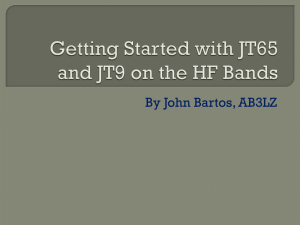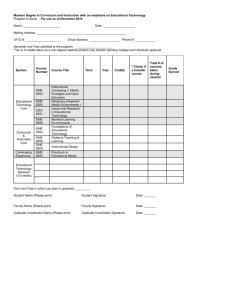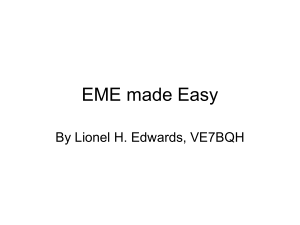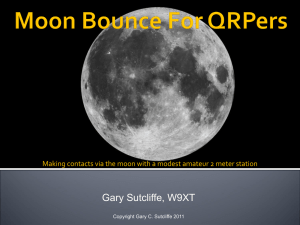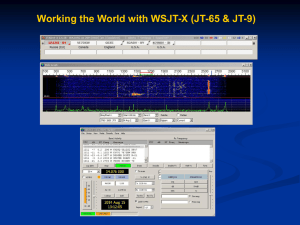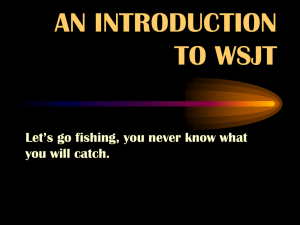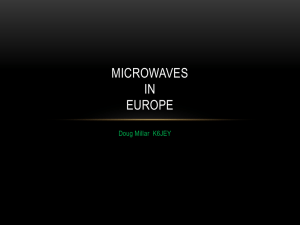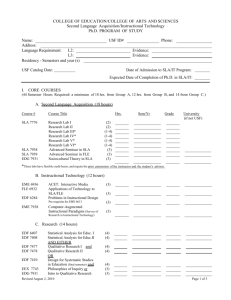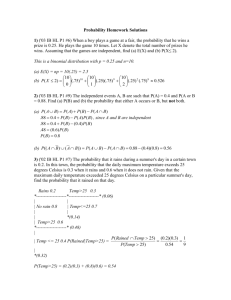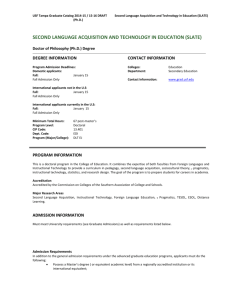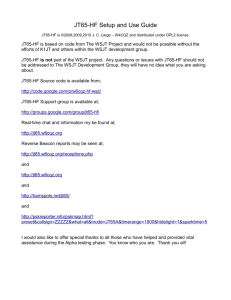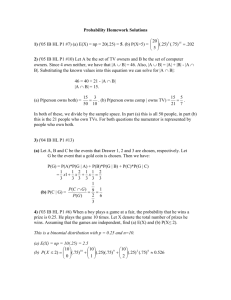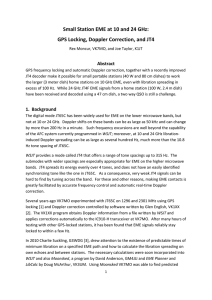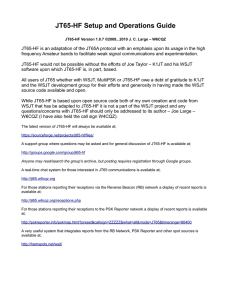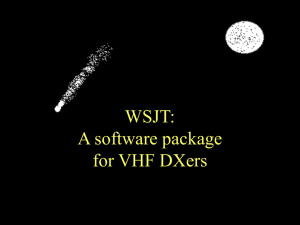MAP65 21st Century EME
advertisement
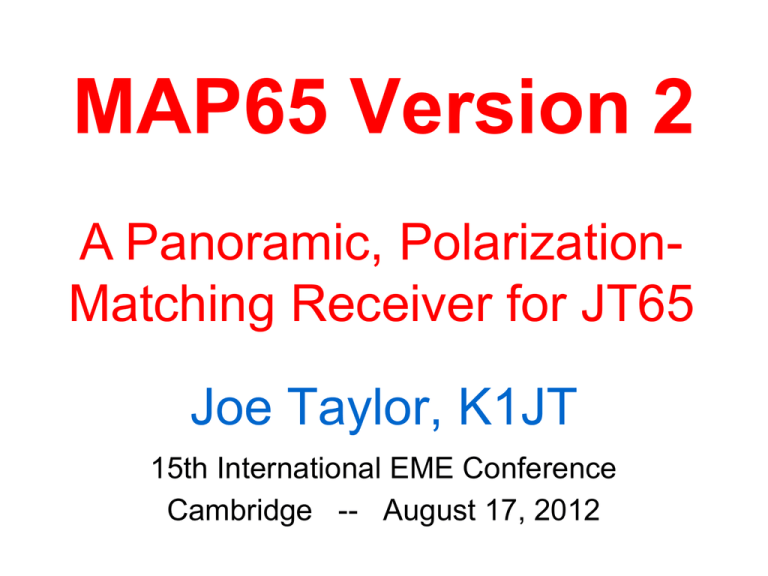
MAP65 Version 2 A Panoramic, PolarizationMatching Receiver for JT65 Joe Taylor, K1JT 15th International EME Conference Cambridge -- August 17, 2012 MAP65: • • • • • • What is it? SDR software, works with JT65 signals “Big brother” to WSJT Rx hardware converts RF to baseband Decodes all JT65 signals in 90 kHz BW X-Pol: Automatic polarization matching Designed for EME on 144, 432, 1296 MHz JT65 Protocol • • • • • • 60 s T/R sequences Compact, structured messages Modulation: 65-tone FSK, 2.7 baud ECC: Reed-Solomon (63,12)6 Works at 10 to15 dB below CW limit > 1000 EME users on 144 MHz ! Program Comparison WSJT • BW 2-5 kHz • Many modes • Decodes one signal • One polarization MAP65 • BW 90 kHz • JT65 only • Decodes all signals in passband • All polarizations (avg 3 dB better) • Automatic Band Map X Y Hardware RF to Baseband Software Linrad, SDR-Radio (optional) MAP65 Wide Graph Astro Data Main Window Band Map Messages MAP65: Version 2 Features • • • • • • • Supports X-pol and Single-pol systems Sub-modes JT65A, B, and C Sample rate: 96000 or 95238 Hz Optional front-ends: Linrad, SDR-Radio Rx hardware: WSE converters, IQ+, Perseus, SDR-IQ, FUNcube Dongle, SoftRock, … QtSDK, C++ for GUI; Fortran for decoder Windows, OS X, Linux, … Example Receivers SDR-Radio Normal Operation at K1JT (2m EME) 1. 2. 3. 4. 5. 6. 7. Turn on Rx, warm up PA Start Linrad and MAP65 Click to track Moon Callsigns start to appear on screen Double-click on a CQing callsign Select Tx polarization (H or V) Click “Auto On” to call him MAP65: Full Screen Display Main Window QSO Window Tx Messages Wide Graph Wide Graph (detail) Band Map 2 × 10-element Xpol Yagis Band Map (grayscale) Messages Rx Hardware Interfacing Input Freq (MHz) SoftRock FUNcube Dongle SDR-IQ, Perseus SoftRock ×2 IQ+ VL, V, U WSE 28, 144 28 28, 144 144 1 2 50, 144, 432 2 Polarizations 1 144, 432, 1296 1 Soundcard Channels 2 – – 4 4 4 USB USB USB USB USB Frequency Control* L, S, M L, S, M L, S L, M L, M Parallel Port L Front-End Software* L or S optional – L or S required L optional L optional L optional Digital Interface * L = Linrad, S = SDR-Radio, M = MAP65 2 MAP65: Why do you need it? • Random EME on 144, 432, 1296 (no skeds or logger) • Superb wideband noise blanker • Copy all EME signals in band • Monitor CW as well as JT65 portions of band • Powerful EME contest operating aid ! Setup | Options – Station tab Setup | Options – I/O Devices Astronomical Data Station Control at K1JT File azel.dat 13:01:28,211.3, 64.1,Moon 13:01:28, 98.3, 33.9,Sun 144, 162,Doppler 115,0,fQSO More Setup Features Setup Utility for FUNcube Dongle Online User’s Guide 432 and 1296 MHz • • • • “Best” EME bands Much smaller Tsys Much smaller antennas are “enough” Hear your own echoes with: – 432: 4 x 6m yagis, 250 W – 1296: 3m dish, 150 W • MAP65 is great for JT65 and CW ! • Use Xpol Yagis on 432 • Single pol’n (RHC/LHC) on 1296 Possible Future Modes? JT65B2, JT65C2 • 2 × speed, for EME contesting • 30 s T/R sequences up to 20 QSOs per hour ! • Sensitivity: 3 dB less • Presently available in WSJT (only) • Possible problems … – QRM? Sub-band plan? Switching between modes?
